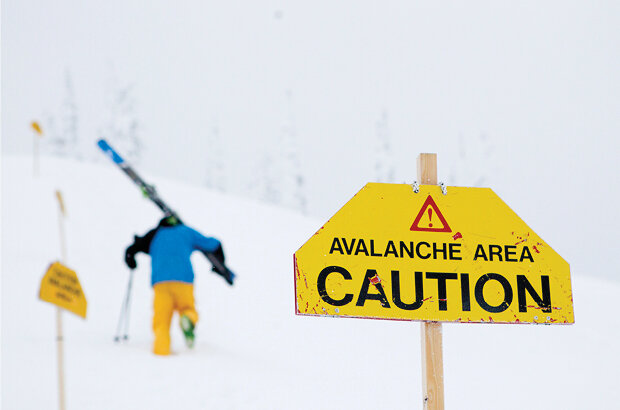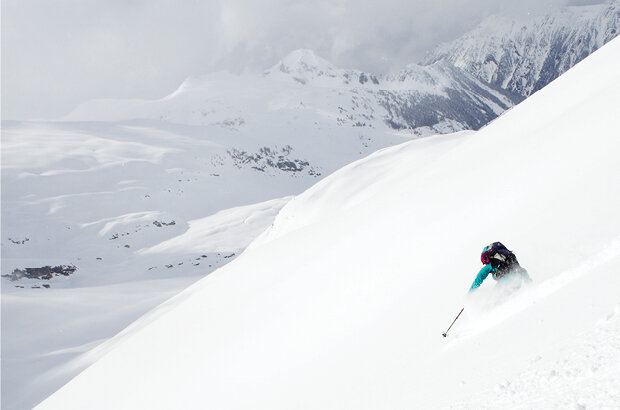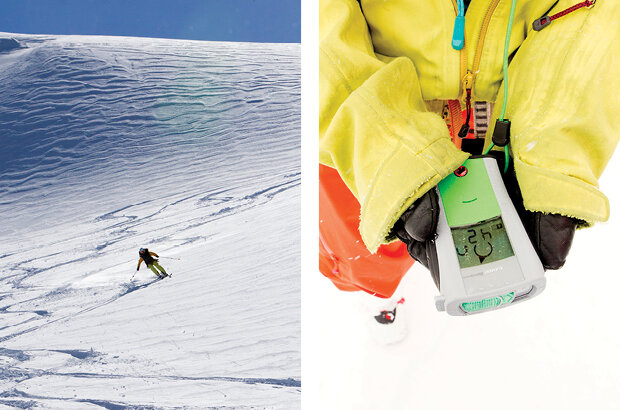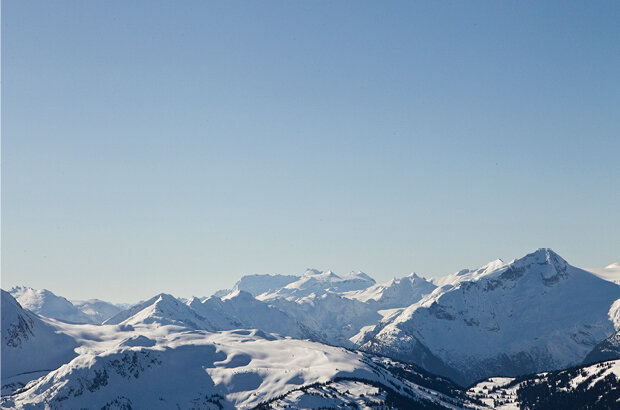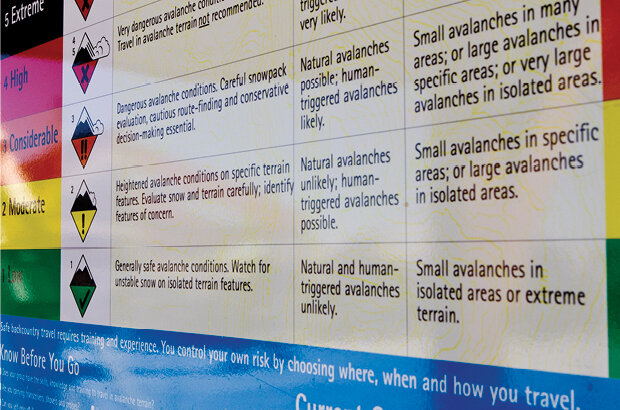THE SERIOUSNESS OF SLACKCOUNTRY
By Abby Cooper
Each winter, skiers and snowboarders duck the lines that separate in-bounds from out at ski areas throughout Western Canada. Enticed by the untracked terrain beyond the ropes, many do so without avalanche training and the gear that could save their lives if the slope goes for a slide. Here’s how you can prepare yourself for your next slip into slackcountry.
“Be aware that there is no safe slackcountry,” explained Robin Siggers. “Ten feet past the ropes you are in high-risk avalanche terrain.”
Siggers, an avalanche forecaster and avalanche rescue dog handler, has been an avalanche professional for the past 40 years and is currently the Mountain Operations Manager at Fernie Alpine Resort. He has seen his share of avalanche related tragedies. Like many professionals and long-time backcountry and slackcountry users, he has also noticed an increasing trend in skiers and snowboarders dipping out-of-bounds without proper preparation.
EASY ACCESS, BIG CONSEQUENCES
Slackcountry, as defined by Backcountry Access, a leading brand in snow safety, is “a term that means using ski lifts to access ‘backcountry’ or out of bounds terrain.” Slackcountry is not a new concept, although its popularity has grown substantially over the last decade.
The outdoor industry is contributing to the popularization and appeal of this uncontrolled terrain, showcasing the pseudo-backcountry through technology, advertisements and films. Recreational skiers and snowboarders are eating up the concept but aren’t always following the steps to enjoy it safely.
“[Slackcountry] is being marketed so much in the ski and snowboard industry, everyone wants to get their hands on backcountry gear, but yet not everyone actually prepares themselves,” said professional skier and avid backcountry user, Caleb Brown. “People without gear follow people with gear, and you hear of more and more incidents with people having none of the necessary means for avalanche rescue, let alone the knowledge that they are even in dangerous avalanche terrain.”
In 2014, the British Columbia Coroners Service released a study on avalanche fatalities in that province between January 1, 1996, and March 17, 2014. The province averaged 10.1 deaths per year, with most of them occurring in Interior B.C. Over 50% of these deaths were related to skiing, heli-skiing or snowboarding, and well over half of decedents were age 20 to 39.
The point is not to scare folks away from slackcountry, but to teach them how to ski and snowboard responsibly in these areas. As Richard Wyne, patrol and avalanche dog handler for Whistler-Blackcomb, said, “If you do it properly, [slackcountry] can be very fun and you can do it for years and years.”
HOW TO STAY SAFE IN THE SLACKCOUNTRY
Knowledge is Key/
Safety begins with educating yourself. Many ski areas offer avalanche awareness days that inform guests about how to get training to enter the backcountry, which resources exist locally, and how to read terrain in the area. The emphasis is on the importance of proper planning and the fact that patrol is not there to look after you and mark hazards like they do at the resort. Additionally, programs such as Avalanche Awareness Night, hosted annually at The Banff Centre, provides insight into snow safety and the latest avalanche information and equipment.
But, awareness alone isn’t enough. The best thing you can do to prepare is to take an Avalanche Skills Training course. Start with the two-day AST 1, which is held both in the classroom and the field. From there you can progress to the four-day AST 2, which provides more advanced avalanche training and study, including three field days. Yamnuska Mountain Adventures offers these courses out of Calgary, Canmore and Rogers Pass.
Practice Before You Take the Plunge/
Once you’ve taken an avalanche course, purchased your equipment and done some research on where you’d like to go, practice! Practice digging pits, time your shovelling and beacon searches and, when you are comfortable with you skills, plan a small safe mission with someone who knows their stuff. Don’t forget to practice planning, reading bulletins and reviewing weather forecasts because this information is just as essential as using a beacon, probe and shovel. Slackcountry may imply that it’s easier, but the steps you take to prepare are the same regardless of how you enter the backcountry.
→ Read More: Perfecting the Art of Bailing
Don’t Slack Off Because of Spontaneity/
With lift lines visible from a distance, slackcountry users may gain a false sense of security. Moreover, unlike a true backcountry mission, slackcountry can be a spur of the moment decision because the option is right in front of you. Planning and preparation can be minimal when stepping out of bounds, but it shouldn’t be. Caleb Brown carries his avalanche gear with him whenever he is skiing because the terrain is tempting and easily accessible. He always wants to be ready to take advantage of fresh tracks.
Remember, though: gear is only half of the equation. Know the avalanche conditions prior to venturing out of bounds.
Seek Out Ski Patrol/
In addition to gathering information prior to heading to the ski resort, you can gather useful information from members of ski patrol, who often have current avalanche bulletins and information about nearby terrain. Don’t be shy about approaching ski patrol, especially if it will mean a safe return from your slackcountry venture. “We encourage people to come and ask patrol what’s going on before heading out,” said Siggers. “We are happy to share our insight.”
Open Up In-Bounds Areas/
Some runs at ski areas are a blast for advanced skiers and snowboarders, but require knowledge of avalanche terrain. Lucky you if you’ve taken a course and got your gear! Freeride Zones, such as Delirium Dive at Sunshine Village, offer avalanche monitoring, but still require users to bring along avalanche gear, and travel only with partners who are properly equipped.
ADDITIONAL RESOURCES
The Fine Line – A fantastic avalanche awareness film produced by Sherpas Cinema.
Avalanche Canada – Access the latest bulletins and updates from forecasters.
Avalanche Skills Training courses – Take your AST1 or AST2.
A lover of all things outdoors, Abby Cooper is a splitboarder, climber, hiker, adventurer, photographer and writer. She’s living life one adventure to the next with her dog by her side.

